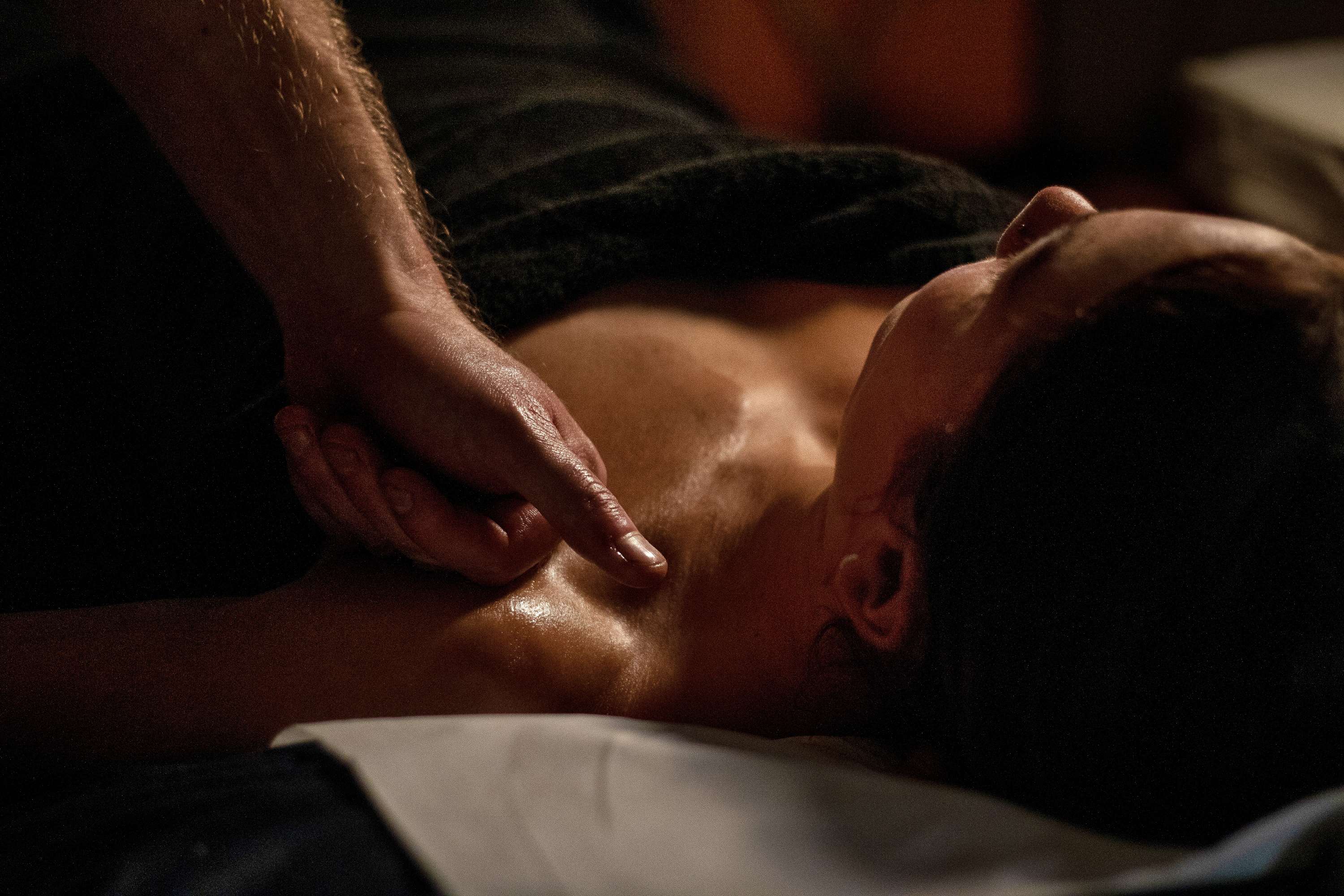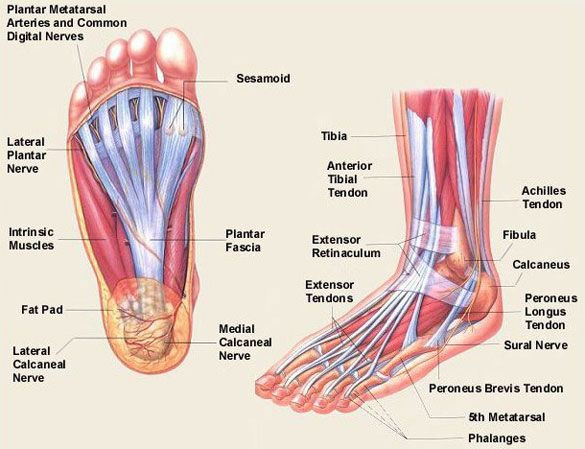Running form and keeping those lower limbs injury-free
- Pentons Performance Therapy

- Feb 16, 2020
- 6 min read
The lower limb (everything from the knee down) is an incredible biomechanical structure. It has to deal with a huge load on a daily basis absorbing and producing a huge amount of force. The lower leg often referred to as just the ‘calve’ is in fact a huge network of muscles and tendons designed to allow for ankle movement, foot and toe movement. We will also look at the foot in more detail in this article as it is so important that each muscle and structure is working well to keep your whole leg healthy. This article will focus on the spring like action that occurs at the ankle and lower leg in general, often in the clinic lower leg injuries we see are as a result of the spring action becoming less effective.

Anatomy of the lower limbs
The muscles of the anterior lower leg, or shin (first image above), are responsible for pulling the ankle and toe up back. Tibialis anterior dorsiflexes and inverts the foot, or when applied to a running action resets the foot and toes ready for the next ground strike. Extensor hallucis Longus and extensor digitorum longus pull the toes back up (extension) the tendons of these extensor muscles run over the front of the ankle and foot, if tight or overworked these can inflame and caused pain at the front of the ankle, especially when flexing the joint. The Peroneus muscles, Fibularis tertius, fibularis longus and fibularis brevis form the outside compartment of the lower leg. All three muscles pronate the ankle joint whilst the longus and brevis also plantarflex and evert. The peroneus muscles protect against ankle sprains by preventing force inversion and importantly the tendons help maintain transverse and longitudinal arches of the foot, more on that later!
The superficial ‘calf’ muscles or posterior lower leg muscles (centre image above) are primarily responsible for plantar flexing the ankle and assist with knee flexion. The Gastrocnemius is the main propelling force in walking and running, the Soleus inserts at the same point as the Gastrocnemius to form the Calcaneal Tendon, otherwise known as the Achillies, the thickest and strongest tendon in the body. The Plantaris,although small with limited movement, plays a hugely important role when it comes to Achillies health. The Plantaris muscle plays an important neurological role in assessing and adjusting the tension of the achillies tendon, this is why eccentric heel drops are often given as rehab for Achillies issues.
The deep muscles of the lower leg are often the problematic ones for runners and where common injuries we see are originating from. Three key muscles which we might bang on about are Flexor digitorum longus, Flexor hallucis longus and Tibialis posterior. This is because these three muscles between them control and maintain the arches of the foot, flex the toes and invert the ankle, all movements and stability which are so important when running. Tibialis posterior is the deepest muscle and helps maintain the arches of the foot, Flexor hallucis longus maintains the longitudinal arch of the foot (front to back) and flexor digitorum longus flexes the phalanges (toes) of the second to fifth toes and plantar flexes and inverts the ankle.

The foot is such an important anatomical structure when it comes to running, many injuries in the lower leg are often because of an immobile foot or weak muscles within the foot. There are four layers of muscle within the foot, whilst you don’t necessarily need to know each individual muscle and what is does, it is important to understand just how much movement there is and should be in the foot. Modern day trainers and time off of feet (sat in cars or at work) means that for a lot of us these muscles and tendons are weak, lack movement and aren’t working well when we run. Think of how much movement we have in our hands and how often we are moving them, the foot is a very similar structure and therefore should be kept strong and mobile.
Applying this to running/jumping activities
So why is any of this relevant to you, how can we use this knowledge to keep our lower limbs healthy, strong and most importantly, pain-free? The key thing to understand from this blog is how the muscles and tendons work together to absorb repeated forces being put through them, but also to continue to contract, create movement and exert force to keep us moving in the right direction. Both muscles and tendons have an elasticity to them, while muscles in general allow for greater movement, tendons offer a spring-like action by storing kinetic energy which in theory is an endless supply which doesn’t fatigue. So, if we break down running gait and apply this knowledge things will hopefully start to make sense. As we push off to propel ourselves forward the recovering foot should be dorsiflexed, to prepare it for its next foot strike. By dorsiflexing at the ankle, the muscles around it are in the perfect position to absorb the impact, store it and then release it to propel the body forward again. This also ensures that muscles which invert the ankle (mainly tibialis anterior) are engage avoiding overpronation and all of the issues this can bring about.
Just before impact the posterior muscles (Gastrocnemius, Soleus, Peroneus, Flexor Longus and tibialis posterior) are slightly lengthened, upon contact with the floor they perform an eccentric movement (lengthening under load). It is during this process where the kinetic energy is stored in the musculotendon junction. They briefly go through an isometric contraction where the foot and ankle stabilise before contracting and releasing the spring and stored energy. Imagine the muscle as a long and thin rubber band and the tendon as a very small but incredible thick elastic band. Without correct dorsiflexion on the recovery phase of a running gait the foot will be landing with a ‘loose’ ankle meaning there is little to no spring being offered up by the tendon resulting in increased forces being absorb in the muscles. This leads to increased stress and a vastly higher risk of repetitive strain injuries such as medial tibial stress syndrome, plantar fasciitis, runners knee etc.
Check out the below video to see this in action. During the first jump the ankle doesn't dorsiflex, this lead to higher load through the lower leg and knee. The second jump shows dorsiflexion of the ankle, on landing there is visible less force being absorbed through the muscles and you can see the tendon spring back up.
Fixing the issue and running pain free
So how can you tell if you are dorsiflexing adequately? The chances are if you don’t struggle with lower limb injuries your running gait is good and the tendons and muscles are happy. If you like many other runners struggle with injuries such as medial tibial stress (shin splints) plantar fasciitis, anterior ankle impingement, runners knee, stress fractures in the feet, Iliotibial band syndrome etc it might be worth looking into you running gait. Technology these days is fantastic and most smart phones have a slo-mo option on the camera. Run as naturally as you can ideally outside with someone filming from side on and check to see what the ankle and foot are doing on the recovery phase.
To ensure correct dorsiflexion is happening and that tendons are offering up a good amount of spring check out the below exercises you can do at home to ensure your body is conditioned for running long distances. By ensuring sufficient range of motion and strength in the related joints and muscles you can run faster, more efficiently and most importantly pain free.
Here are a few things you can try at home to imrpove your running gait and condition your body for running:
Ankle Range of Motion
Banded Ankle Dorsiflexion Soleus Stretch Walking Downward Dog
and Plantiflexion
Plyometrics and Conditioning
Banded Dorsiflexion Tennis Ball Calve Raise Heel and Toe Walking
All of the above stretches are explained on our Instagram page @pentonstherapy so give it a follow for more content like this. If you have any questions about this article or would like to know more, leave a comment below or get in contact here.
If you have been struggling with lower limb injuries or are in training for half or full marathon and want some support along the way then come and see how we can help you, Book Now.
Hope you enjoyed reading and found this blog useful :)
Jamie


















Thank you for this detailed explanation.
Massive thank you for this Jamie! I’m currently dealing with pain in the Flexor digitorum longus muscle and having this very well written explanation helps me to understand what’s going on at the lower leg/foot. Much appreciated, cheers Greg